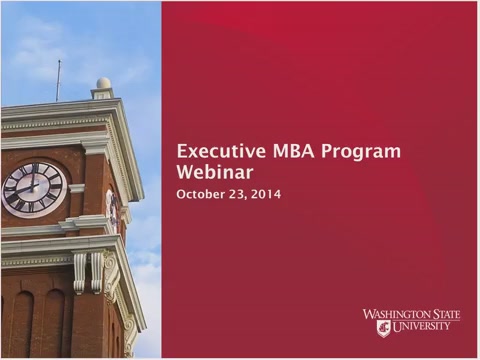Contents
The starting point here is an example presented in IFRS 3 for calculation of goodwill. As a result of the acquisition of the Target Company , Acquirer Company recognised $16.8m of non-controlling interest . Let’s assume that after one year, AC acquires the remaining 20% shareholding in TC for $30m . For simplicity, let’s also assume that the value of NCI remained unchanged after the acquisition date (normally, NCI changes as a result of dividend payments, profit generated by TC etc.). Typically, franchisor does not have power over the franchisee, as its rights are designed to protect the franchise brand without the ability to direct the activities that significantly affect the franchisee’s returns.

If no inter-company service agreement is in place or the parent company is not explicitly allowed to sign on behalf of the Principal then this might still be problematic tax-wise. Given today’s “matrix” structure of international corporate structures, one company entering into a contract is often a “sister” or “cousin” of the companies who will ultimately make purchases under it. (A “parent” company often doesn’t want to busy itself with “transactional” matters). I think “ on behalf of” works, provided that the subsidiary has authorised the parent to sign the agreement on its behalf. If so, the subsidiary is bound as party to the agreement in the same way that a company is bound if a director or individual authorised under a PoA signs an agreement, when the same form of wording is often used. 2) Enter into a contract with the parent, treat the parent as a sublicensor, and require the parent to enter into separate sublicenses with its subsidiaries.
For example, Sidewalk Labs, a small startup that is a subsidiary of Alphabet, seeks to modernize public transit in the United States. The company has developed a public transportation management system that aggregates millions of data points from smartphones, cars, and Wi-Fi hotspots to analyze and predict where traffic and commuters are most congregated. The system can redirect public transportation resources, such as buses, to these congested areas to keep the public transit system moving efficiently. Aggregating and consolidating a subsidiary’s financials make a parent’s accounting more complicated and complex.
The only reason to have the parent bear the obligations would be to make it liable for the affiliate’s failure to perform. But that could be accomplished more economically by having the parent guarantee the affiliate’s performance of some or all of its obligations. Further if such a case were to be brought up in future, the overseas decisions discussed herein may play an important role in determining the approach of the Indian courts. Similarly, Principles 1 and 2 of the UN Global Impact, which find their basis from the Universal Declaration of Human Rights, urge business entities to support and foster respect for human rights, and not to be involved in any kind of human right abuses. Principle 4 of the UN Global Compact further urges business entities to abolish all forms of forced labour.
11A parent that elects in accordance with paragraph 10 not to present consolidated financial statements, and presents only separate financial statements, complies with paragraphs 38-43. 8A parent that is exempted in accordance with paragraph 10 from presenting consolidated financial statements may present separate financial statements as its only financial statements. To grossly oversimplify things, we have a public holding company that has a number of operating subsidiaries, one of which employs everyone in the US, no matter which operating company they work for, and enters into all commercial contracts. However, later in Cape v. Lubez, it was held that there are no special doctrines in tort law on the basis of which the liability can be foisted on the parent company for the acts of its subsidiary; rather, it has to be adjudged wholly on the common tort law principles.
Example of a Subsidiary Structure
When one business owns enough stock in another company to control that company’s operations, a parent company subsidiary relationship has been created. Parent companies can either establish their own subsidiaries or can purchase an existing company. Conversely, the https://1investing.in/ parent may be larger than some or all of its subsidiaries , as the relationship is defined by control of ownership shares, not the number of employees. 39This Standard does not mandate which entities produce separate financial statements available for public use.

IAS 27 Consolidated and Separate Financial Statements outlines when an entity must consolidate another entity, how to account for a change in ownership interest, how to prepare separate financial statements, and related disclosures. Consolidation is based on the concept of ‘control’ and changes in ownership interests while control is maintained are accounted for as transactions between owners as owners in equity. Despite the name “parent company,” the relationship between a parent company and its subsidiaries is not the same as a parent and child relationship. While the parent company does hold influence over the subsidiary company, the subsidiary is a legally independent entity.
There is a difference between a mother or father firm and a holding company by way of operations. A holding company has no operations of its own; it owns a controlling share of stock and holds assets of different companies . In common, firms become subsidiaries when another entity purchases 51 p.c of their stock, thereby gaining voting and determination making control.
Group, parent and subsidiary
Joint control is the contractually agreed sharing of control of an arrangement, which exists only when decisions about the relevant activities require the unanimous consent of the parties sharing control. The ability to use its power over the other company to affect the number of the company’s returns . Power generally arises parents and all subsidiaries together can be termed as when the parent has rights that give it the ability to direct the relevant activities, i.e. the activities that significantly affect the other subsidiary’s returns. The term affiliate is used to describe the relationship between two entities wherein one company owns less than a majority stake in the other’s stock.
36On the loss of control of a subsidiary, any investment retained in the former subsidiary and any amounts owed by or to the former subsidiary shall be accounted for in accordance with other IFRSs from the date when control is lost. 32A parent can lose control of a subsidiary with or without a change in absolute or relative ownership levels. This could occur, for example, when a subsidiary becomes subject to the control of a government, court, administrator or regulator. 28Profit or loss and each component of other comprehensive income are attributed to the owners of the parent and to the non-controlling interests. Total comprehensive income is attributed to the owners of the parent and to the non-controlling interests even if this results in the non-controlling interests having a deficit balance. A subsidiary is an entity, including an unincorporated entity such as a partnership, that is controlled by another entity .
- 2) Enter into a contract with the parent, treat the parent as a sublicensor, and require the parent to enter into separate sublicenses with its subsidiaries.
- Whether the subsidiary has to amend its AOA to inform the name change of the holding company.
- Thus, an Indian company in which more than 50% shares are held by a foreign body corporate will be a ‘Subsidiary Company’.
However, a subsidiary is a business whose parent company holds a majority stake (meaning they are a majority shareholder of 50% or more of all shares). Some subsidiaries are wholly owned, meaning the parent corporation owns 100% of the subsidiary. There are varying views as to whether this exemption can be applied by a subsidiary whose parent prepares consolidated financial statements under local GAAP that are identical or nearly identical to IFRS (e.g. ‘IFRS as adopted by EU’). In my opinion, this exemption can be applied provided that differences, if any, to IFRS as issued by the IASB are clearly trivial. When assessing control, purpose and design of the investee need to be taken into account. An investee may be designed so that voting rights are not the dominant factor in deciding who controls the investee (IFRS 10.B5-B8;B51-B54).
The parent isn’t the guarantor and neither is the operating company if some other Affiliate does the ordering. Generally, when licensing software, I use the sublicensing approach, with a number of conditions that depend on the business we are in and our pricing model. When dealing with services, I usually do something along the lines of allowing the affiliate to adopt the agreement by placing an order under it. I;ve also seena lot of deal that are essentially agency arrangements if anyone ever thought about them — which they probably did not.
Subsidiary vs. Affiliate: What’s the Difference?
These include white papers, government data, original reporting, and interviews with industry experts. We also reference original research from other reputable publishers where appropriate. You can learn more about the standards we follow in producing accurate, unbiased content in oureditorial policy.
For example, the disclosures required by IFRS 8 Operating Segments help to explain the significance of different business activities within the group. This section, hence, tries to formulate the ways in which a parent company can be saved, to the extent possible, from transnational litigation arising out of the duty of care towards its subsidiary. A combined reading of the rulings made in Okpabi and Vedanta echoes the sentiments that the corporate veil may no longer shield parent companies from incurring liability under the tort law for the acts or omissions of their foreign subsidiaries. However, there is no precedent in India to determine the liability of the parent company towards its foreign subsidiary.

Any difference between fair value and carrying amount is a gain or loss on the disposal, recognised in profit or loss. Thereafter, apply IAS 28, IAS 31, or IAS 39, as appropriate, to the remaining holding. Holding companies and conglomerates are two different types of parent companies. Conglomerates are large companies that maintain their own business ventures while also owning smaller companies. It is a member of the undertaking and controls alone, pursuant to an agreement with other shareholders or members, a majority of the voting rights in the undertaking. Is a member of it and controls alone, pursuant to an agreement with other members, a majority of the voting rights in it, or if it is a subsidiary of a company that is itself a subsidiary of that other company.
What Is a Parent Company Subsidiary Relationship?
As demonstrated by the “Report on Dirty Profits Exposed”, the operations of various companies have left a negative impact on a range of human rights issues and are continuing to do so. Certain Indian headquartered companies too have been accused of poor environmental, health, safety, and human rights performance in relation to their overseas operations. In considering these two examples, it is clear that the form and content of communications between a holding company and its subsidiary will be fundamental in determining whether such communications are held to be instructions or directions, or simply advice.
Further, wherever public interest demands, the court must lift the corporate veil in the interests of justice. Interaction between the sister corporations, or subsidiaries, just isn’t required. In reality, in some instances, sister companies may compete against each other in the identical market. For instance, Exxon Mobile Corporation and ConocoPhillips compete in opposition to one another in the gas and oil markets but are both owned by father or mother firm Berkshire Hathaway. For occasion, a enterprise with numerous rental properties types a parent corporation.
Is a Subsidiary its Own Company?
Therefore, the ratio laid down in these cases can hardly be employed in adjudging cases of transnational tort litigation. Deloitte refers to one or more of Deloitte Touche Tohmatsu Limited (“DTTL”), its global network of member firms and their related entities. DTTL (also referred to as “Deloitte Global”) and each of its member firms are legally separate and independent entities. There is no exemption for a subsidiary that had previously been consolidated and that is now being held for sale. However, a subsidiary that meets the IFRS 5 criteria as an asset held for sale shall be accounted for under that Standard.
Comments